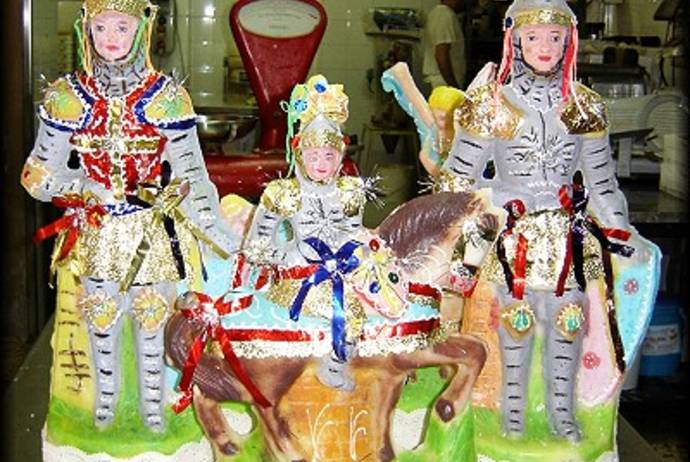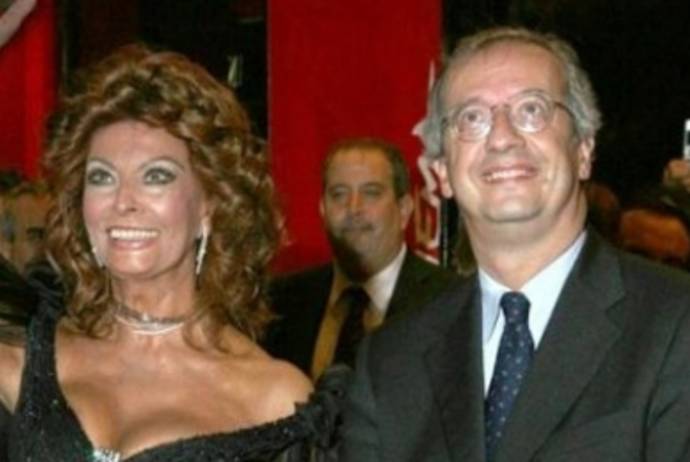Following a particularly disheartening period in Italy, what could be better than celebrating the end of the old year and the start of the new year (in Italian il Capodanno) in an auspicious way?
Families and friends usually gather to await the new year and have a merry feast all together. Of course food plays an important role. Lentils are always present in the traditional Italian Cenone di Capodanno; in fact they symbolize money and good fortune for the coming year. In many parts of Italy, dinner also includes a cotechino, a large spiced pork sausage, or a zampone, a stuffed pig’s foot. Pork symbolizes the richness of life in the coming year. Italian tradition also dictates that in order to avoid a boring year it is necessary to celebrate all night long. In the past, mainly in Naples but in many Italian cities as well, old dresses, furniture, and pottery were thrown from windows as a way to symbolically discard the negative aspects of the old year. In Naples, even bathtubs and washing machines have been discovered the next day. This custom is still alive in many parts of Italy, and as in the past, it causes damage not only to parked cars but has injured passersby as well. Another questionable tradition is to fire guns into the air to chase away evil spirits and to express joy for the arrival of the new year.
In several Italian villages during New Year’s Eve, groups of young people sing the strenna in the streets, a typical song wishing everyone a happy new year and asking for gifts. In Naples the tradition of the sciuscio continues: groups of amateur musicians sing and play music in the streets using instruments they crafted. Chasing these musicians away is interpreted as a bad sign. Today these groups are comprised mainly of children; after their performance they expect a small gift, usually money or treats. Predictions are also very popular: it is important to notice the first person one encounters on the street in the new year. An old person or a hunchback represents a good sign, while a child or a priest is a misfortune. Such forecasts are based on analogy: an old person stands for a long life, a hunchback has always been seen as a good sign, a priest represents a funeral, and a child refers to an early death.
At midnight, the new year is welcomed with huge fireworks displays in the main squares but private parties also include firecrackers and sparklers. Naples is famous for the best and biggest New Year’s fireworks display in Italy. It is a real gift for the onlookers who can finally forget their daily problems and wait for a magical midnight toast followed by an unforgettable fireworks show. In some smaller towns there are bonfires in the central square around which people gather until dawn. In places near the coasts, lakes, or rivers there is the tradition of boats and ships blowing their horns to ring in the new year.
In Bologna, New Year’s Eve is celebrated with the traditional Fiera del Bue Grasso (Feast of the Fat Ox). The ox is decorated from horns to tail with flowers and ribbons. The bells of the churches ring, people all around light candles, and of course, fireworks are set off. At the end there is a lottery and the winner receives a special prize: the ox, of course. There is also a procession that ends just before midnight in Piazza San Petronio.
On New Year’s Eve dancing is a must: in many towns there are exhibitions in the main squares with music and dancing before and after the fireworks, until the first light of the New Year. In Rome, Milan, Bologna, Palermo, and Naples it is possible to see huge outdoor shows with pop and rock bands. The most important events are sometimes even televised. In Rome the traditional New Year’s Eve celebration takes place in Piazza del Popolo. Huge crowds celebrate with rock and classical music concerts, dancing, and of course, fireworks. There is also a very popular concert in front of the Quirinale, the residence of the Italian president; the president attends the concert and at midnight he toasts and welcomes the new year with all of the Romans gathered in the square. The celebrations continue through the night and on New Year’s Day there are special shows for children performed by acrobats in the main squares.
In the meantime, all those who decide to remain at home spend the last hours of the year playing a very popular game called tombola, similar to bingo. The peculiarity of this game is that every number is associated with a symbol, according to the Neapolitan smorfia. So, instead of calling the numbers aloud, players act out the symbol that the number represents. For example, 90 is “fear,” 47 is “a dead man talking,” 13 is “Saint Anthony,” 1 is “Italy,” 28 is “a half-naked woman,” and so on.
The New Year is also celebrated with spumante or prosecco, the famous Italian sparkling wine.
In Rome the celebration continues on the 1st of January with an unusual ritual: brave men and women of various ages welcome the new year by diving off the Cavour Bridge into the cold waters of the Tiber River. This tradition was started in the 1960s by a Belgian named Rick De Sonay who introduced this dive and caused consternation among the authorities but inspired incredible enthusiasm in the Romans. When he emerged from the cold waters after minutes of suspense he indicated with a gesture of the hand that all was OK: this simple act immortalized him as “Mr. OK.”
And, as one last but not least tradition, an important piece of advice: don’t forget to wear your red underwear on New Year’s Eve! They say it will bring you good luck in the coming year. So…Tanti Auguri e Buon Anno a Tutti!
(Edited by Giulia Prestia)


































